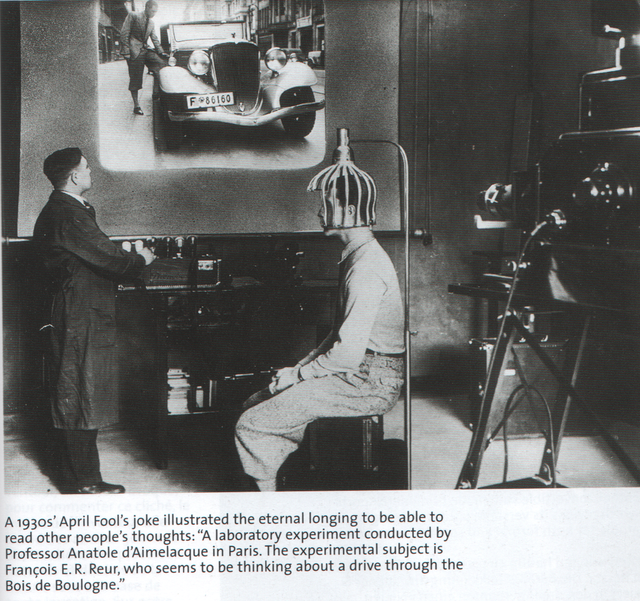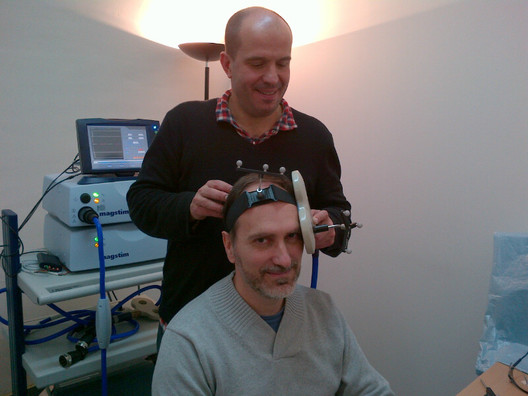CV
I am an aging homo-sapiens still drinking too much coffee.
Following the seminal work of scientific pionneer Anatole de l'Amelacque (see the picture below), I use brain imaging to try and understand the brain machinery that allows us to speak (even if not everybody needs a brain to speak).

Current Position
-
Research scientist (Directeur de Recherche CNRS) at the INSERM-CEA Cognitive Neuroimaging Unit.
-
Postal address : INSERM-CEA Cognitive Neuroimaging unit Neurospin center Bât 145, Point Courier 156 F-91191 Gif-sur-Yvette Cedex FRANCE
-
Tel : +33 1 69 08 79 34, Fax : +33 1 69 08 79 73
-
Email: christophe@pallier.org
-
Link to my full Academic CV
-
The list of my published papers, as well as the pdf for most of them, is available on this page.
Diplomas
- 2009 Habilitation à diriger des recherches, University Pierre et Marie Curie (Paris VI)
- 1996 New Jersey driving license, NJ DMV
- 1994 Doctorate in Cognitive Science at the Ecole des Hautes Etudes en Sciences Sociales, Paris
- 1990 Engineering degree from the Ecole Polytechnique, Palaiseau (you can admire the iconography of the diploma)
- 1986/7 Maths Sup-Spé, Lycée Condorcet, Paris.
- 1985 Baccalauréat Lycée J.-J. Rousseau, Sarcelles
Professional Experiences
- 2002- Researcher in the INSERM-CEA Cognitive Neuroimaging Unit.
- 2007 Visiting scholar in the Speech Perception group of the University of Barcelona.
- 1998-2002 CNRS research scientist, Laboratoire de Sciences Cognitives et Psycholinguistique.
- 1997 post-doc, Max Planck Institute for Psycholinguistics, Nijmegen, The Netherlands.
- 1996 post-doc, Rutgers Center for Cognitive Science, New Jersey
- 1994-95 post-doc, department of Psychology of the University of Barcelona
- 1987 military service (officer cadet) in the 3/30 Lorraine air force squadron (BA112, Reims, Armée de l'air).
Awards, Prizes
- 2013 "#1 Dad" (attested by a keychain)
- 2018 Google Maps "Master Photographer" badge (more than 130.326.436 views on Oct. 29 2023)
- 2021 Angry Bird Friends highest badge of honor ("Legend")
Teaching Experiences
- Since 1998, I have taught on various topics (Speech Perception, Introduction to Psychology of Language, Introduction to Cognitive Psychology, Neurobiology of language, of Bilingualism, Data Analysis, Python and R Programming), in the Cognitive Science DEA and master of the EHESS and ENS.
- Since 2014, I teach Introduction to neuroimaging methods in the Brain and Cognition Master at the Pompeu Fabra University
- Invited lecturer at University of Barcelona, University of the Basque Country in Vitoria, UCLA, HEC, Ecole des Ponts et Chaussées, [Université Paris Descartes]{http://www.parisdescartes.fr/}, Université Paris Sud Orsay.
Former and current trainees, Phd students, postdocs,...
Charlotte Jacquemot , Valérie Ventureyra , Narly Golestani , Anne-Dominique Devauchelle-Lodeho , Chavie Fiszer , Ylan Boureau , Kepa Erdocia , Elodie Cauvet , Begonia Diaz , Asaf Bachrach , Volker Ressel , Sophie Gallot , Doug Bemis , Chotiga Pattamadilok , Amaia Carrion , Corinne Jola , Yihui Hung , Claire Chang , Yi-Chen Lin , 劉允中 , MiXue Tan , Valentina Borghesani , Murielle Fabre , Martin Perez-Guevarra , Alexandre Pasquiou , Bosco Taddei , Corentin Bel
(Note: If I forgot you and you wish to added, please contact me)
Research
When you study one neuron, it's Neuroscience. When you study two neurons, it's Psychology
How does the brain decode the acoustic signal of speech, recognize words and comprehend sentences? My research interests encompass speech processing, language comprehension, bilingualism and second language acquisition. I explore these questions using the tools of experimental psychology and cognitive neuroscience.
My main findings are the following:
- Listeners use language-specific constrains, and in particular the syllabic structure of their language, to parse the speech signal (Pallier et al, 1993; Dupoux et al, 1999, 2001).
- Early and intensive exposure to a second language does not guarantee attainment of native-like perception (Pallier et al. 1997, Pallier et al. 2001)
- Early and intensive exposure to a language does not guarantee stable and irreversible learning: on the contrary, a first language can be mostly forgotten as studies on adoptees attest (Pallier et al. 2003, Ventureyra et al. 2004)
- Using sine-wave stimuli that can be perceived either as noise or as speech, we highlighted brain regions involved in speech perception (Dehaene-Lambertz et al. 2005)
- Contrasting French and Japanese, we highlighted the brain regions involved in phonological processing (Jacquemot et al, 2003)
- "Good" and "bad" learners of foreign language show different brain responses and have detectable differences in brain structures (Chee et al. 2004; Golestani et al. 2007)
- We have explored the language understanding network with an emphasis on syntactic parsing (Devauchelle et al. 2009, Pallier et al. 2011). We are currently exploring similarities and differences between Music and Language syntactic processing.
Also, I have developed the "Lexique" database of French with my colleague Boris New.
Future
Below is a picture of Antoni Valero Cabre zapping stimulating my Broca's area using transcranianial magnetic stimulation.

Who knows? One day, I might become a retrophrenologist.